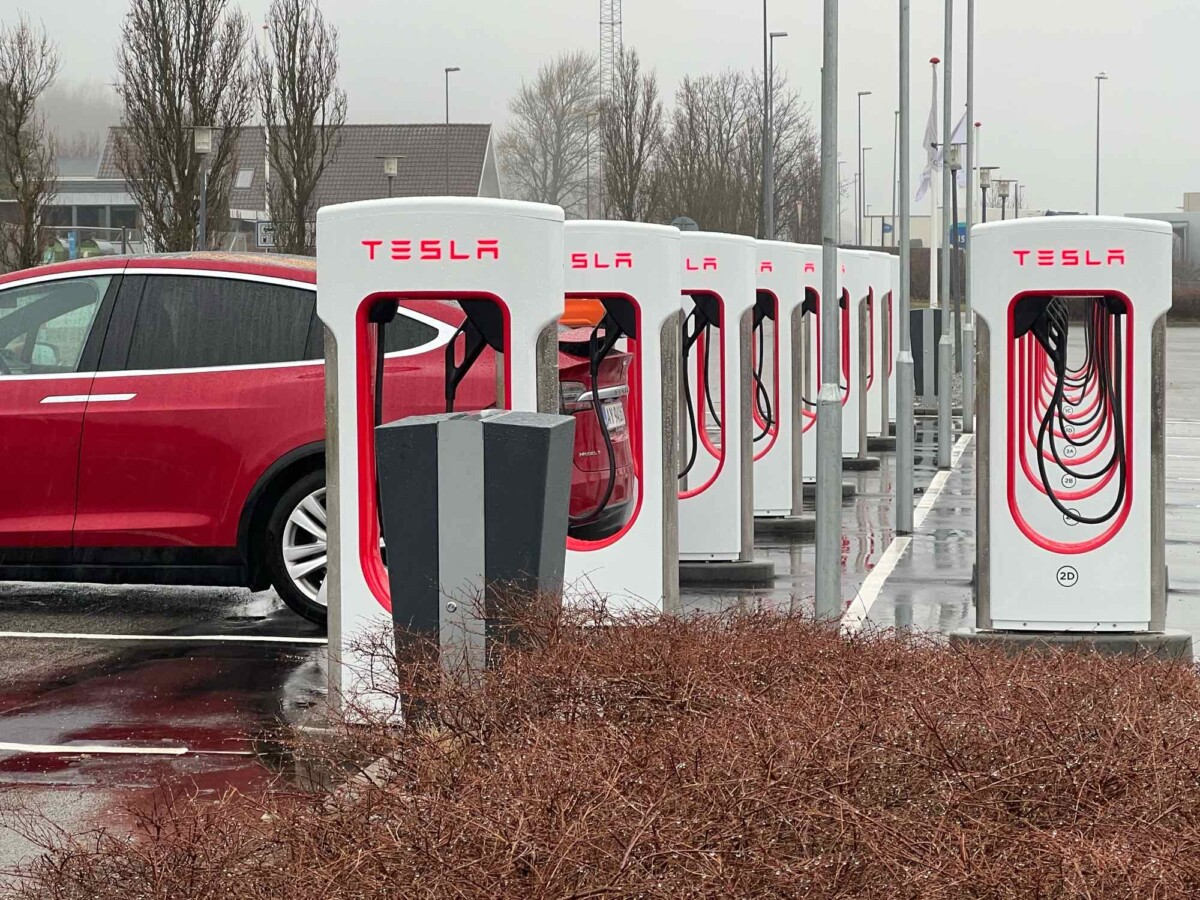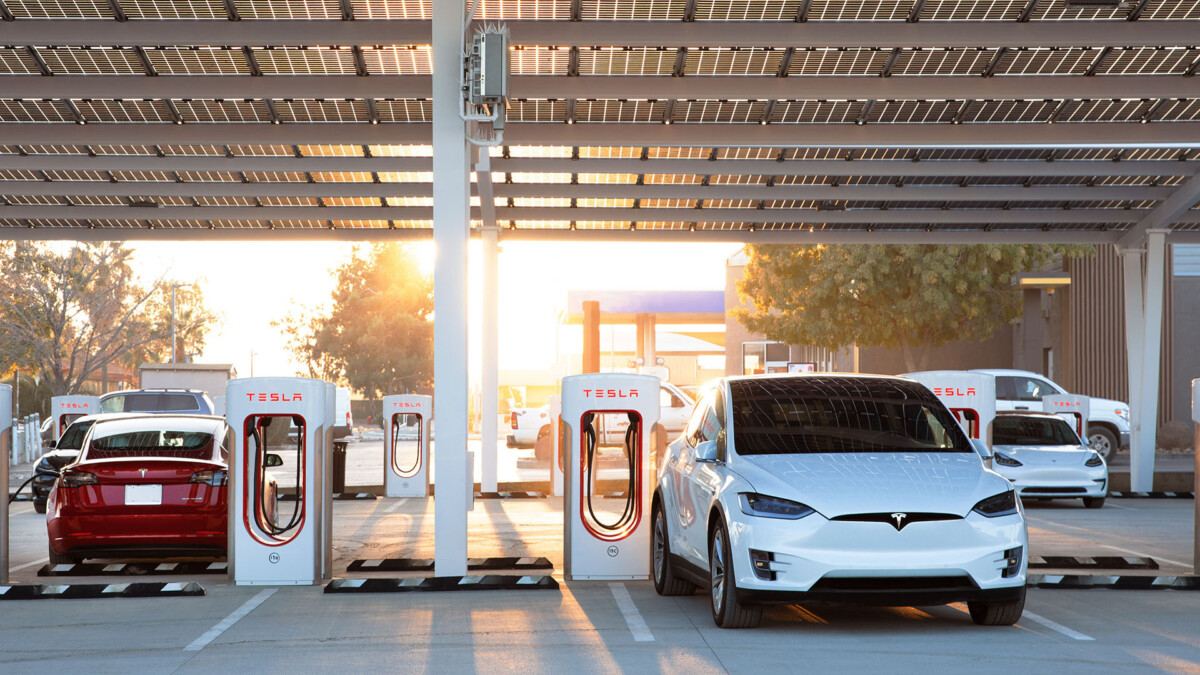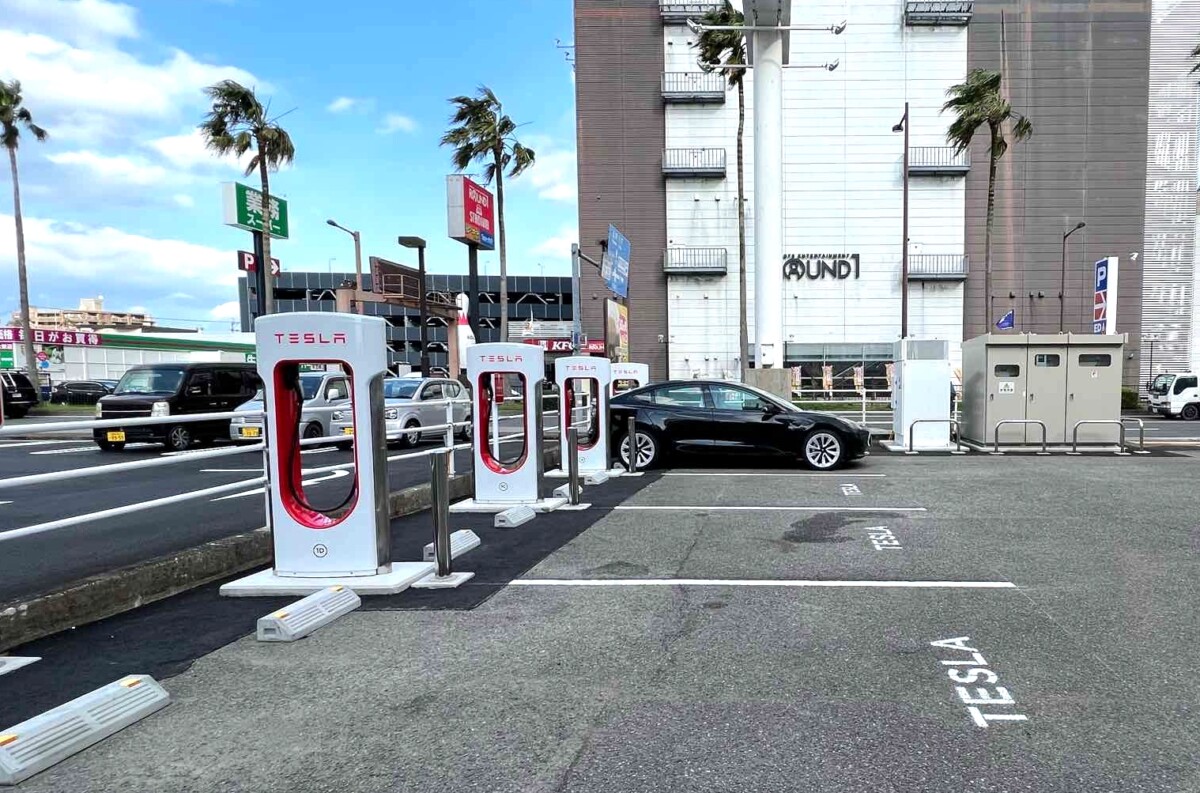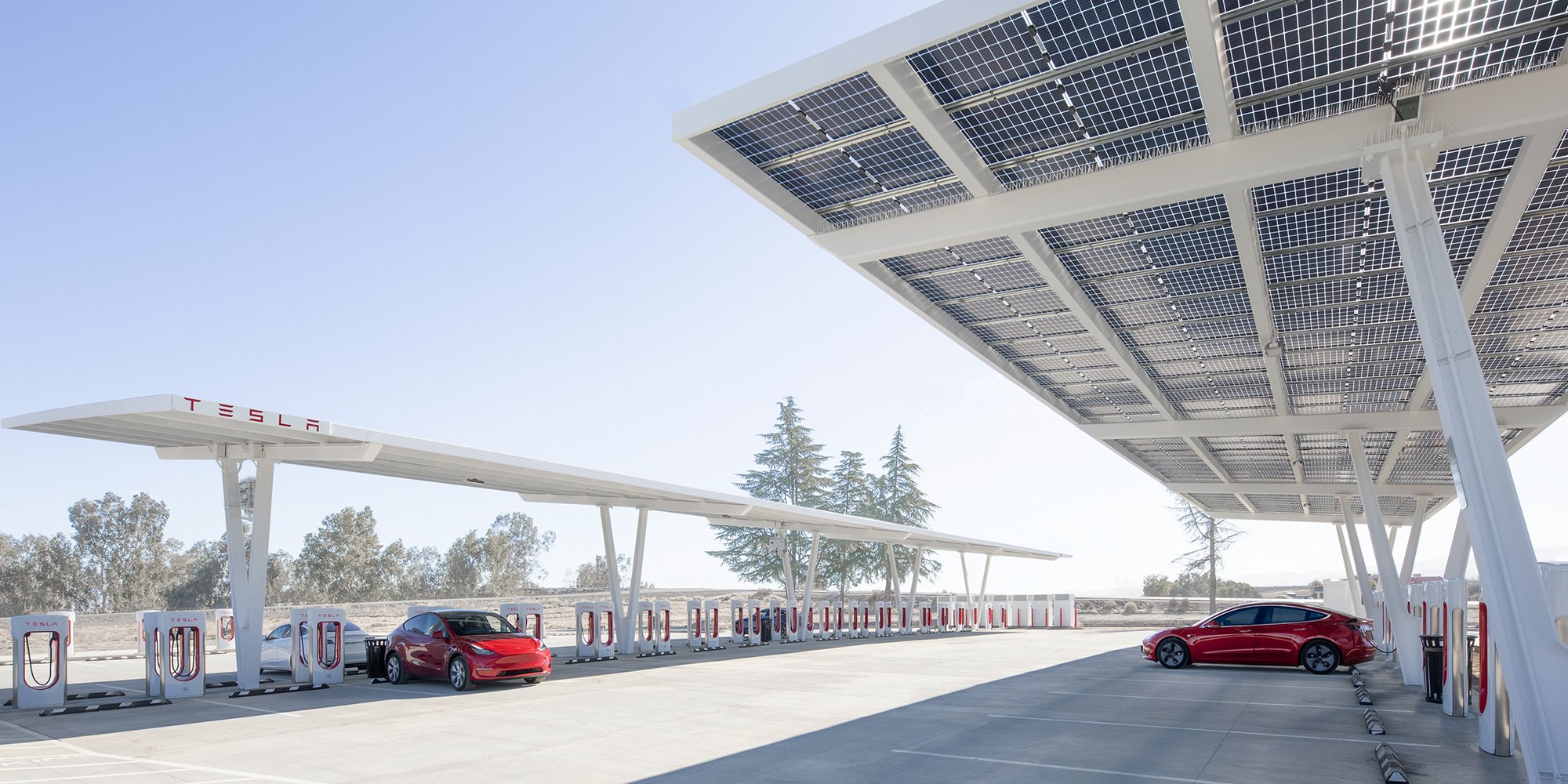Fast, economical and easy to use, Tesla Superchargers are among the best fast charging networks for electric cars. Which can sometimes lead them to be victims of their success; rumors of an additional tax for charges that were too long had been mentioned, but we now know a little more. Enough to avoid excessively long waits at charging stations.
We already told you about it at the end of October: while digging into the source code of a software update for Tesla vehicles, an American hacker realized that a mention of new charging costs had appeared. Basically, overcharging was considered if the load exceeded 80%, thus making it possible to operate the terminals better and reduce waiting times at the stations.
All this has just come to fruition: the site Not A Tesla App informs us that an update to the user manual explicitly mentions these new fees, and we explain everything to you.
Neither everywhere nor all the time
Good news: these congestion fees » (congestion charges) do not systematically apply. We even want to believe that this will be an exception: they will only apply to certain Superchargers (even if we do not have the complete list), and only when they are saturated. That is to say when most of the terminals will be used.

Another unknown: the battery charge level at which this overcharging is triggered. That said, we can reasonably lean towards an SoC (state of charge) of around 80%, since this is the maximum level that Tesla recommends the driver to set at the most requested stations.
Costs that are added to others already existing
This congestion fee is therefore added to the “unjustified occupation costs” (idle fees) already implemented on Superchargers. The latter, however, are much more lax, since they are only triggered when the car is 100% charged, when the driver does not unplug it, and when the station is occupied at more than 50% of its capacity.

The idea: each minute your car remains plugged in despite a full charge will be charged 50 cents, an amount doubled when the station is completely used. These new fees therefore go a step further, with extra billing occurring much earlier in the recharge process. The brand’s desire is clear: to encourage drivers to only charge their electric cars to the level sufficient to reach the next station or their destination, and nothing more.
At the moment, congestion charges do not yet appear to be applied, unlike unjustified occupancy charges which have been applied for years.
A good or bad idea?
In itself, the concept seems unstoppably logical: I don’t know many people who don’t want to limit station congestion during peak periods. Especially since an electric car battery charges much more slowly between 80% and 100%. But now, as we told you about in the previous article, these new fees can disadvantage part of the population.

If the most exclusive Teslas (like the Model S or the Model Propulsion, only have 60 kWh usable — not counting vehicles from other brands that can access Superchargers. From there, the slightest constraint (freezing weather, impossibility of charging at destination) may require extending the charge beyond these famous 80%, and therefore triggering these new costs.
However, let’s put it into perspective: on the one hand, Superchargers continue to offer some of the lowest prices of all fast charging operators. On the other hand, the Tesla planner is known to be one of the best in the world, with a precision and reliability that is difficult to match; they can, for example, redirect you to another station if the one initially planned is saturated.
In addition, the network of charging stations is increasingly extensive, particularly in France with almost all motorway service areas having a fast charging station. Enough to be able to hope to ignore these new costs the majority of the time.
Want to join a community of enthusiasts? Our Discord welcomes you, it is a place of mutual help and passion around tech.
